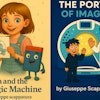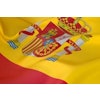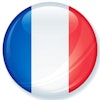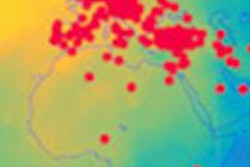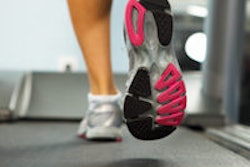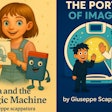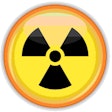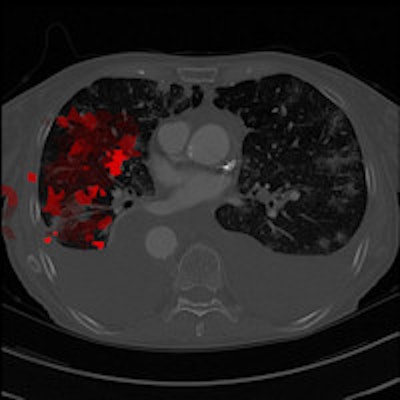
Radiologists increasingly face information overload in their interpretation tasks, but a medical image retrieval system combining text-based searches and content-based image retrieval (CBIR) techniques is assisting more of them, according to an article published online on 21 May in the International Journal of Medical Informatics.
In initial testing involving 16 radiologists, the system -- called Khresmoi -- was able to produce a high degree of accuracy for finding images and cases, according to the team led by Dimitrios Markonis of the University of Applied Sciences Western Switzerland in Sierre, Switzerland. Accuracy and speed were an improvement over standard Internet-based searching methods.
"Our results show that young radiologists quickly feel comfortable in using new search tools, such as CBIR, relevance feedback, and querying using complex statements," the authors wrote. "CBIR, despite its shortcomings in describing high-level concepts with simple visual features, can complement and improve text-based retrieval. Together with relevance feedback, it can facilitate quick query reformulation."
Overcoming overload
While medical literature on the Internet can be an important resource, searching for radiology images can be unsuccessful one out of four times, according to a prior study by the group, which also includes researchers from the Medical University of Vienna and the Health On the Net Foundation in Geneva.
Enter Khresmoi, a search engine designed to help general practitioners, the general public, and radiologists to access trusted biomedical information. In this project, the researchers sought to assess the 2D image search prototype designed for use by radiologists. They wanted to determine if Khresmoi could improve upon current radiology information search methods in radiology (i.e., patient-centered or Google Internet searches) and if it leads to finding answers to information needs that are currently unmet. The researchers also wanted to find out if certain functionalities were more useful and which tools could be enhanced or added.
The radiologist prototype Khresmoi interface was inspired by medical image and literature search engine interfaces. Users can query by text and/or image examples in order to retrieve images.
"Images can be selected to be displayed in full size and links to corresponding articles are provided," the authors wrote. "Interesting results can be stored in the personal library of the user for future use and investigation. Sharing of results and comments on documents among users is also supported."
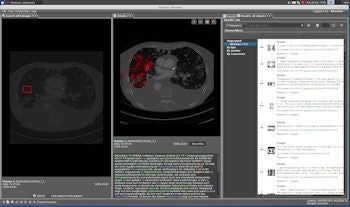
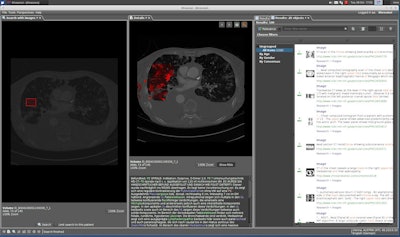
Khresmoi.png: The radiologist interface for Khresmoi, a search engine designed to help find relevant images and cases using text-based and CBIR searches. Image courtesy of Dr. Henning Müller.
The researchers conducted two different user tests at the University Hospitals of Geneva and the Medical University of Vienna. The first was a pilot user study to discover any system bugs and to fine-tune the study protocol. Next, 11 participants -- who had not taken part in the pilot user study -- evaluated the system in a larger test. There were four interns, four residents, an associate professor of radiology, one attending radiologist, and one medical doctor without a radiology background. All were younger than 40 years old.
The researchers considered searches to be successful if at least one relevant result was found within the given time limit (five minutes for image searches and seven minutes for case-based retrieval).
Faster, better performance
The researchers found that Khresmoi yielded solid results. Aggregate success rates were:
- Image searches: 27/31: 87%
- Article searches: 15/19: 79%
In image searches, the average time to locate the first relevant result was 106 seconds. The mean time was 150 seconds for case-based searches. There was a mean of four relevant image search results and 3.1 case-based searches.
"The overall success in finding relevant images (87%) using the Khresmoi 2D image search prototype indicates an improvement over the percentage (~75%) reported in [a prior study by the group] on the image finding success rate of radiologists using existing tools," the authors wrote.
The average time to find a relevant result was also less than the average estimation of between 5 and 10 minutes in the group's prior study "and indicates an added value in terms of time efficiency when using the Khresmoi system," they noted.
While the users were generally satisfied with the system's response time, they did have a median score of neutral for its reliability. This was due to a few minor bugs in the prototype, according to the researchers.
In good news, the users seemed to find the system to be "novel and useful in practice," with a median score of 4.5 (on a scale of 2 to 5). This was particularly encouraging, considering that the system is still in development and usefulness can be hidden by usability dissatisfaction, they explained.
Senior author Dr. Henning Müller of the University of Applied Sciences Western Switzerland said that the group is planning to continue developmental and research work on Khresmoi. "All of the major components are open-source and we hope to create a bit of a community around it," he told AuntMinnieEurope.com. "One follow-up project focusing on text search has been accepted and we submitted one for the image search part as well."
The researchers are also considering commercialization of Khresmoi, but "it would need a larger partner as we are mainly technology providers and have little experience and marketing of such tools."
